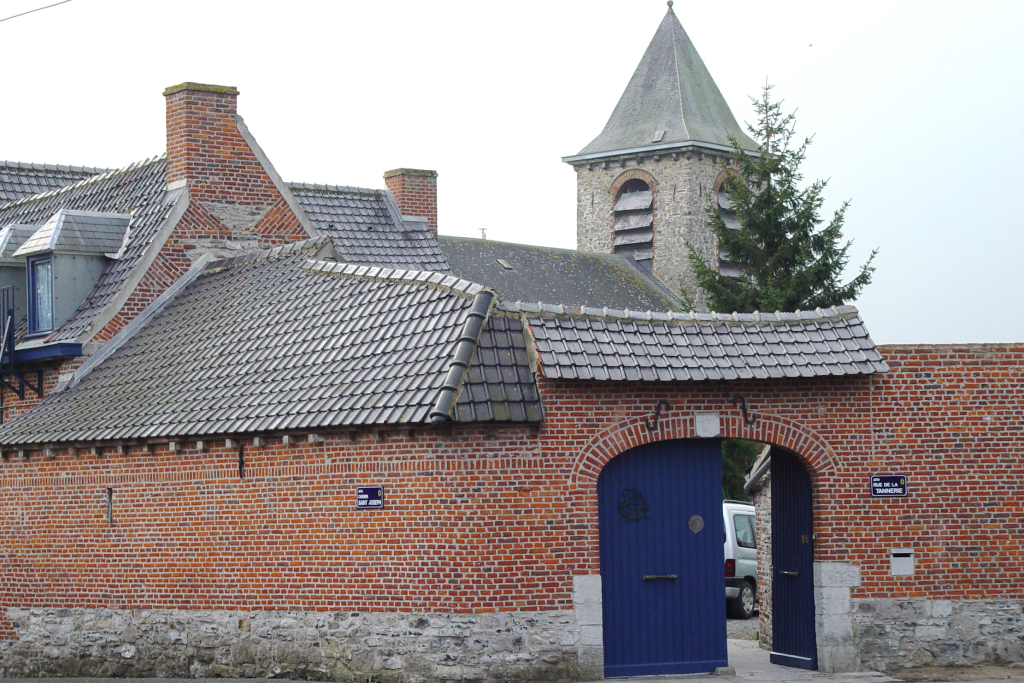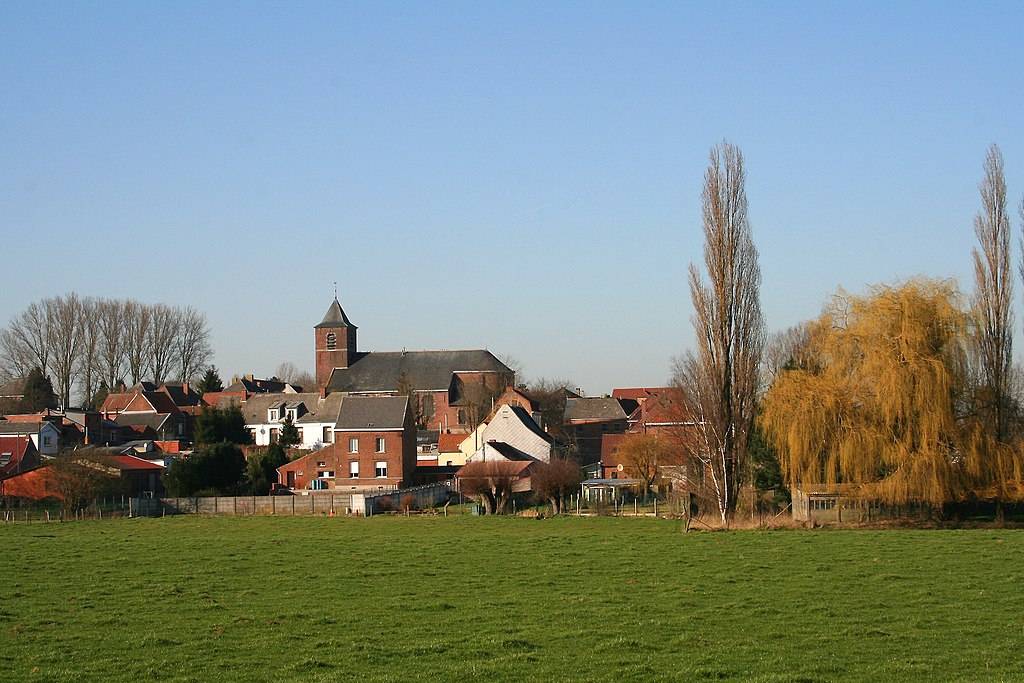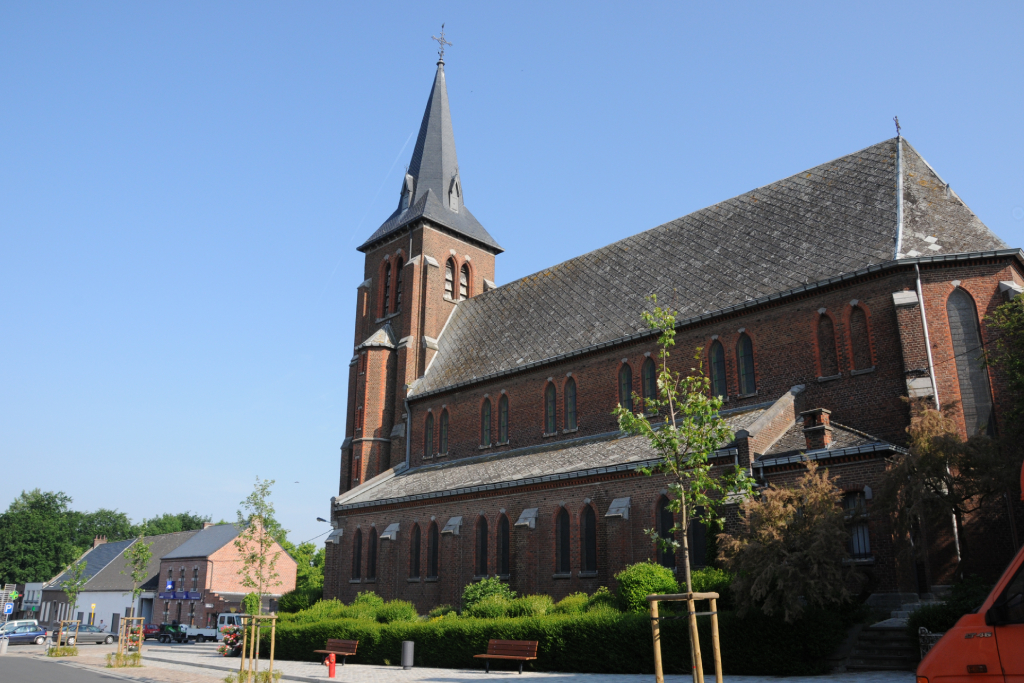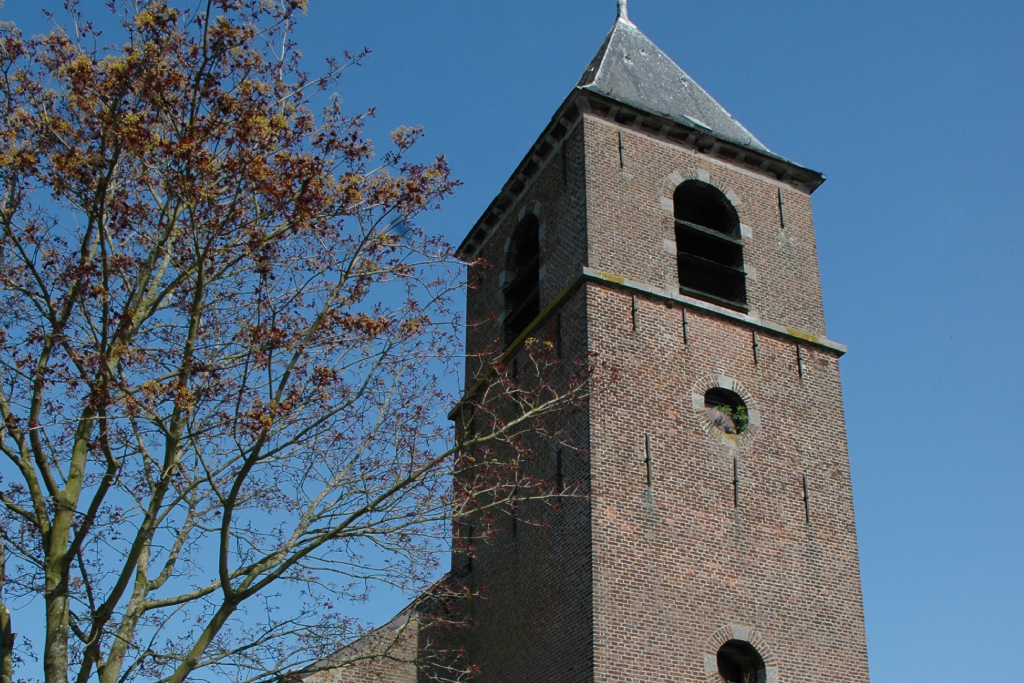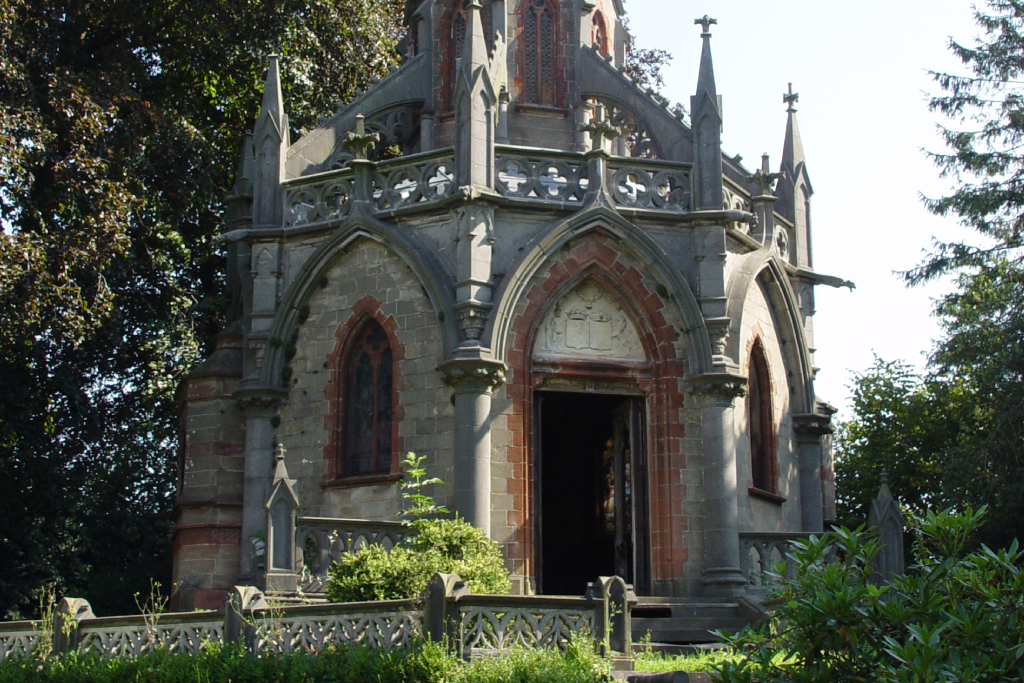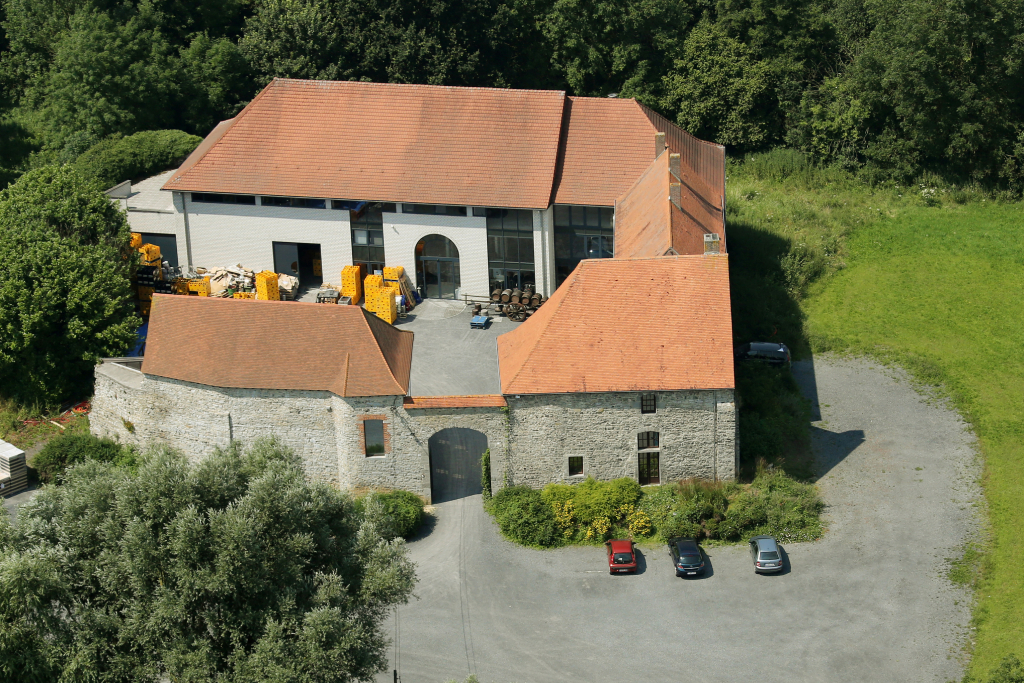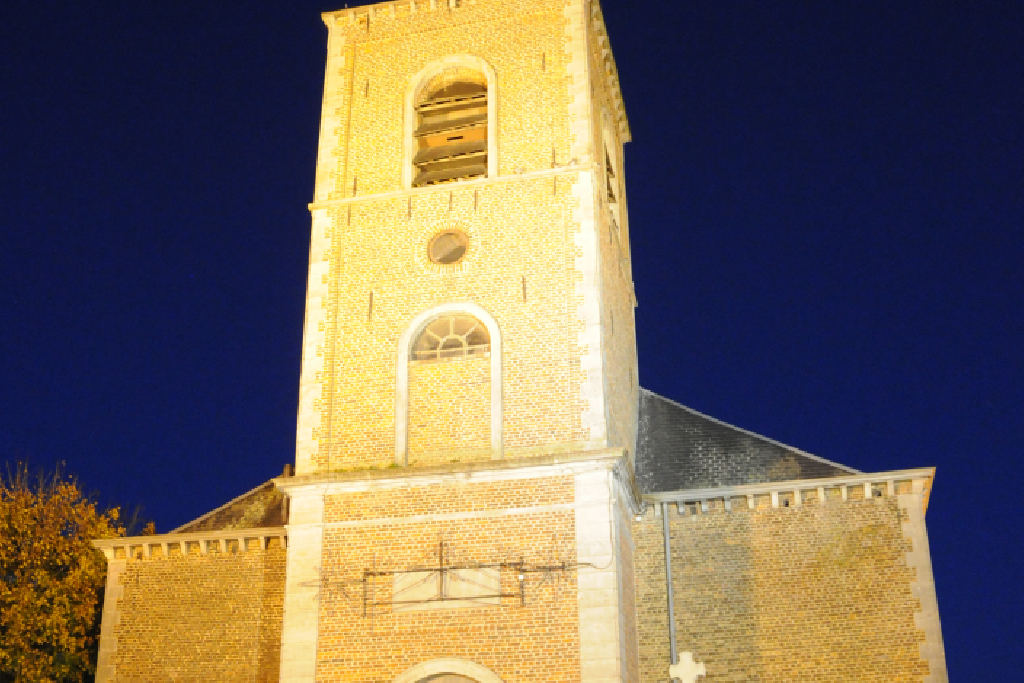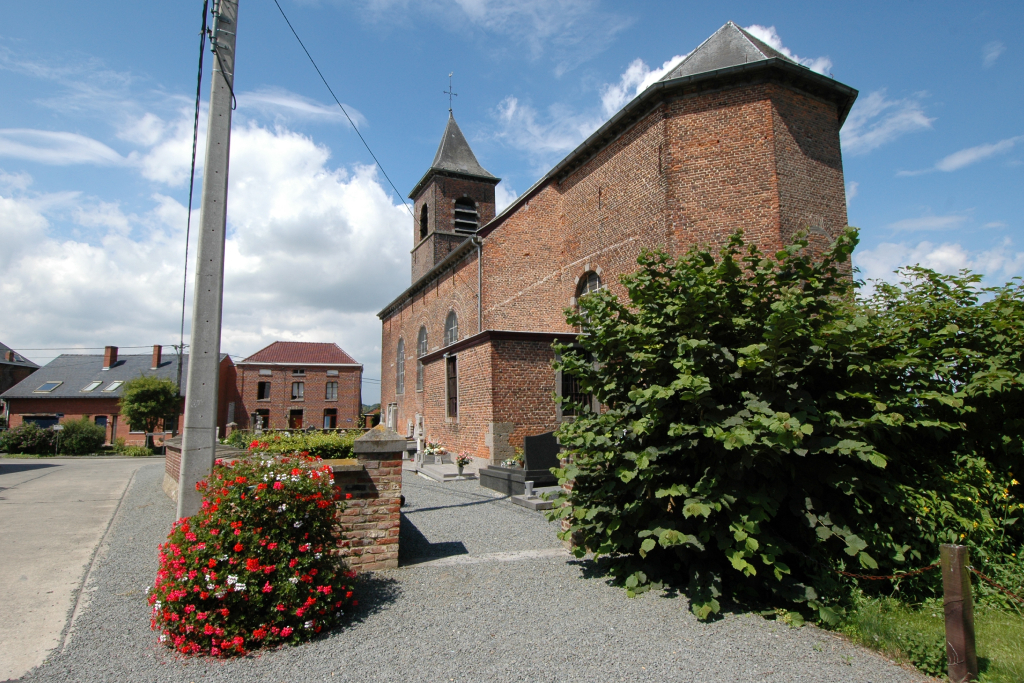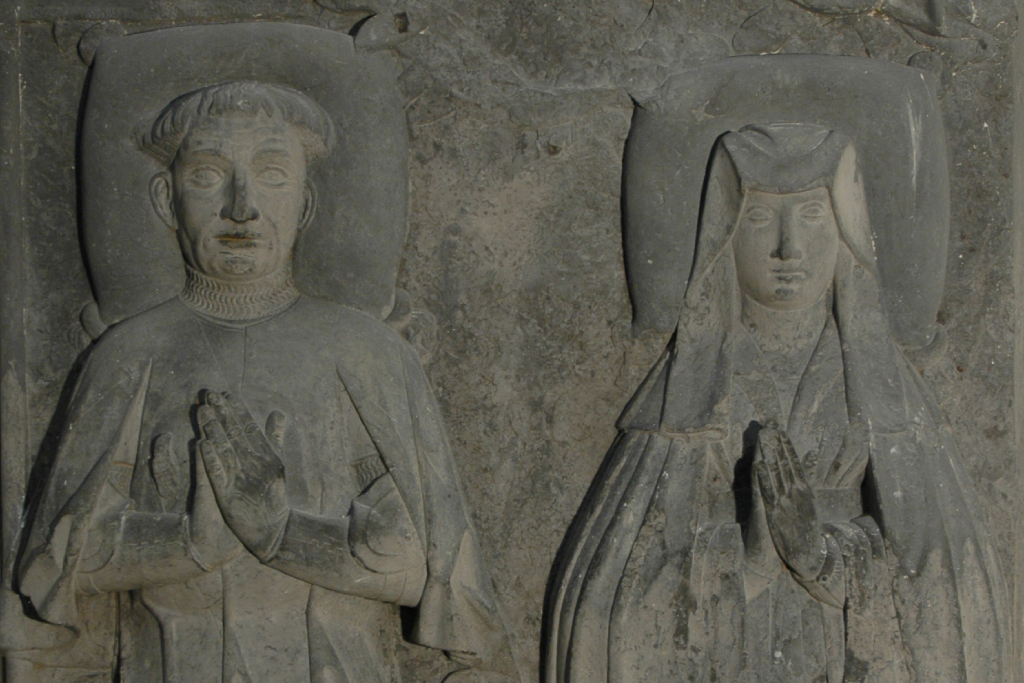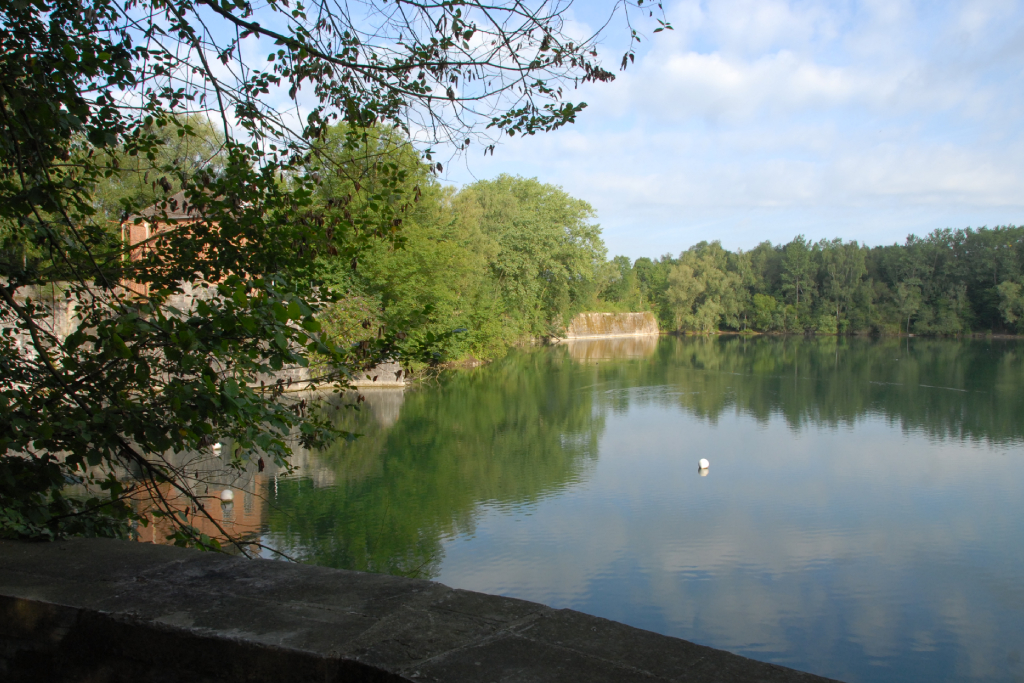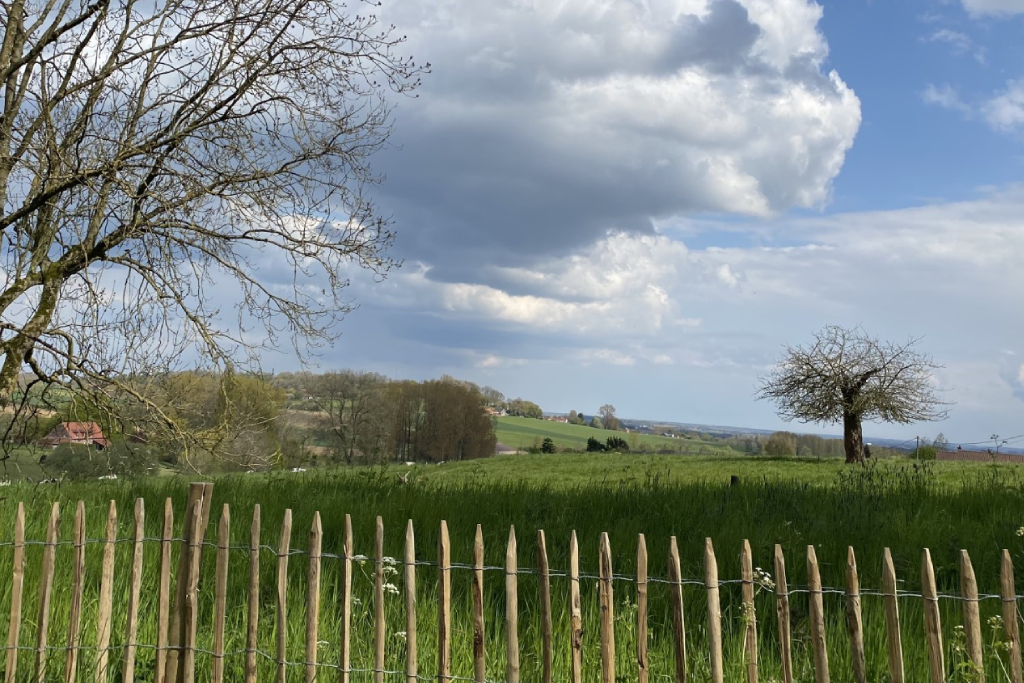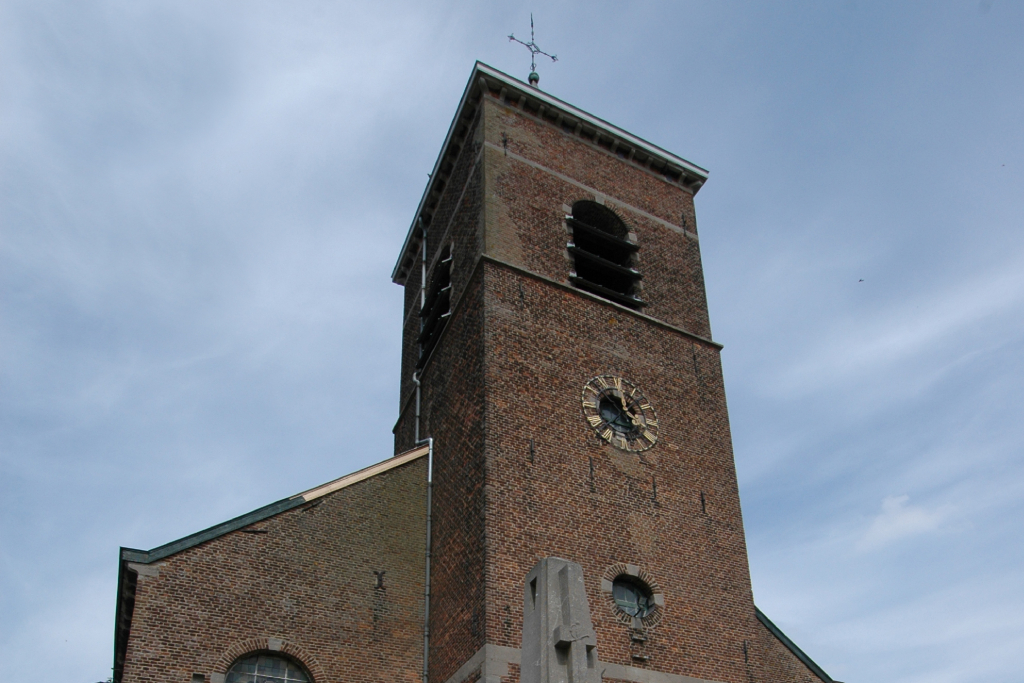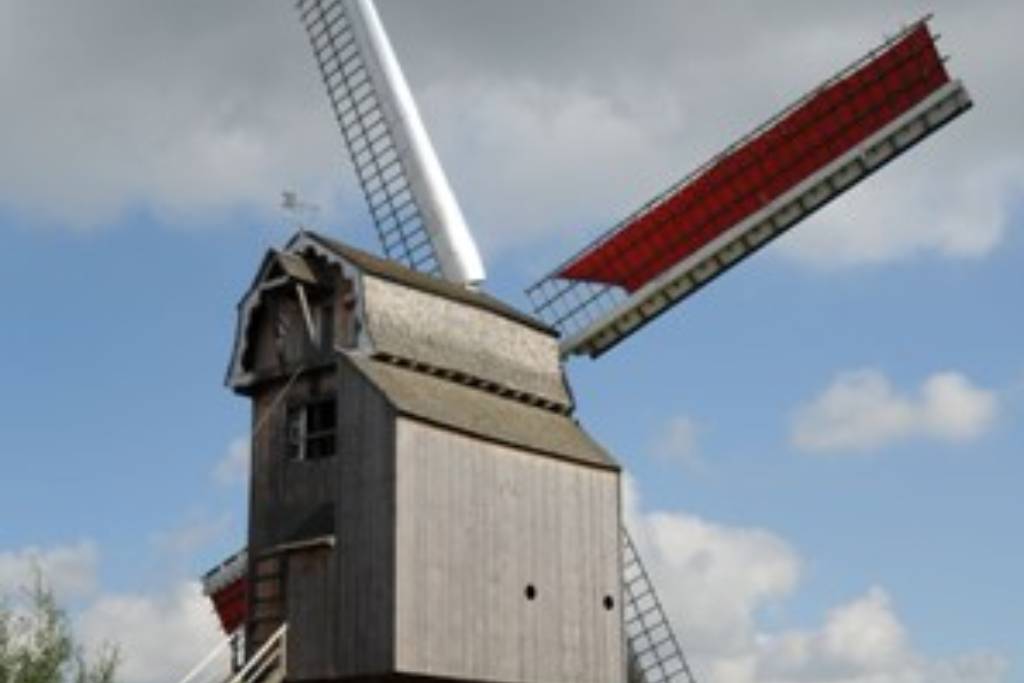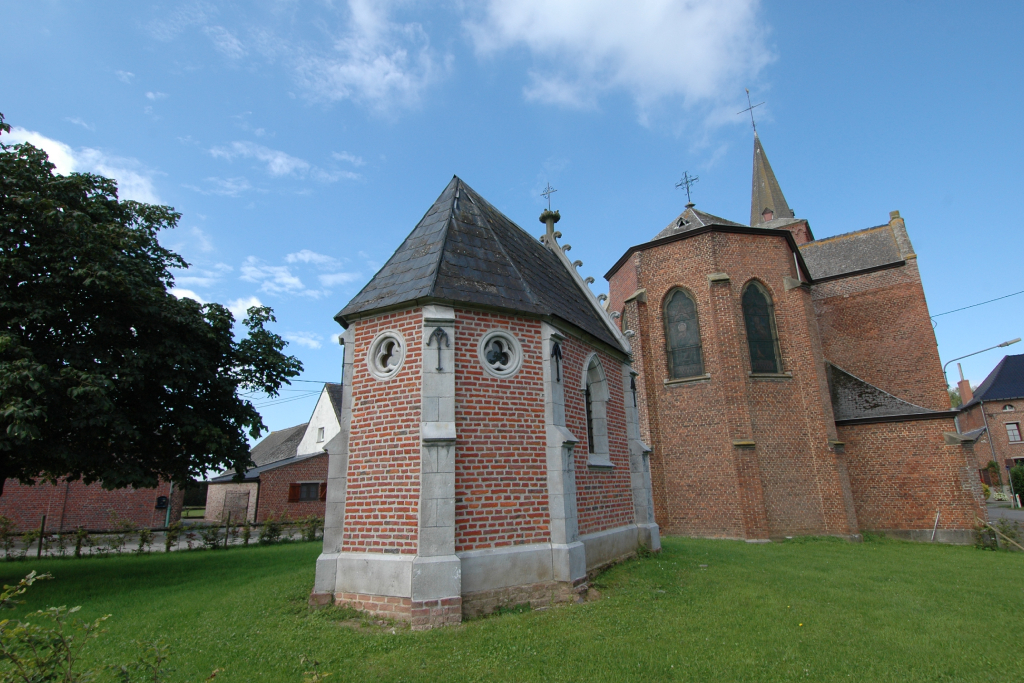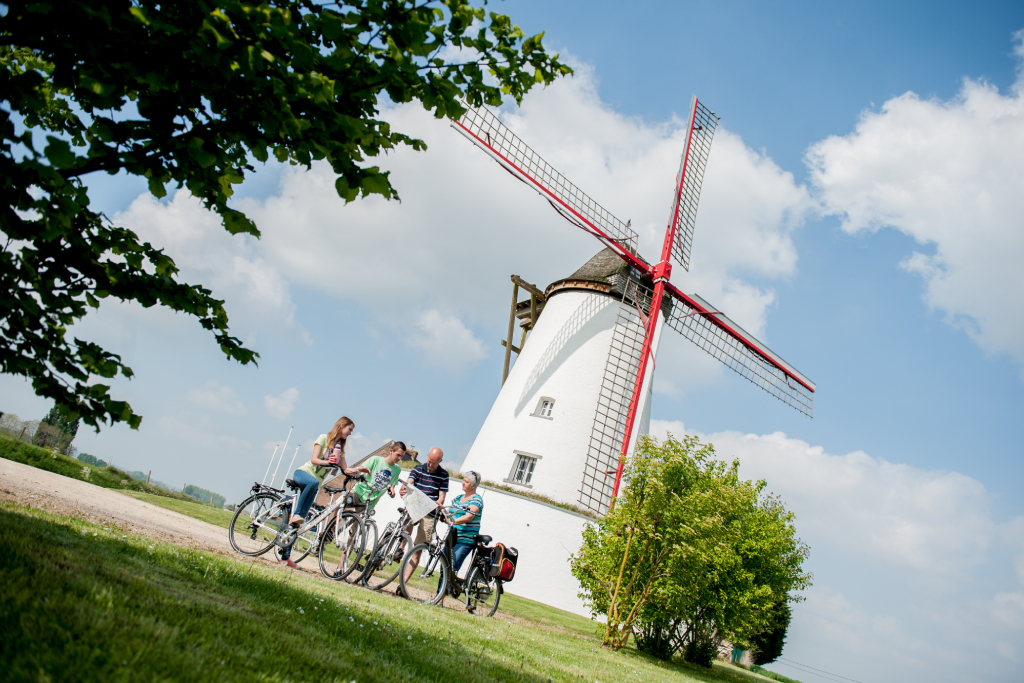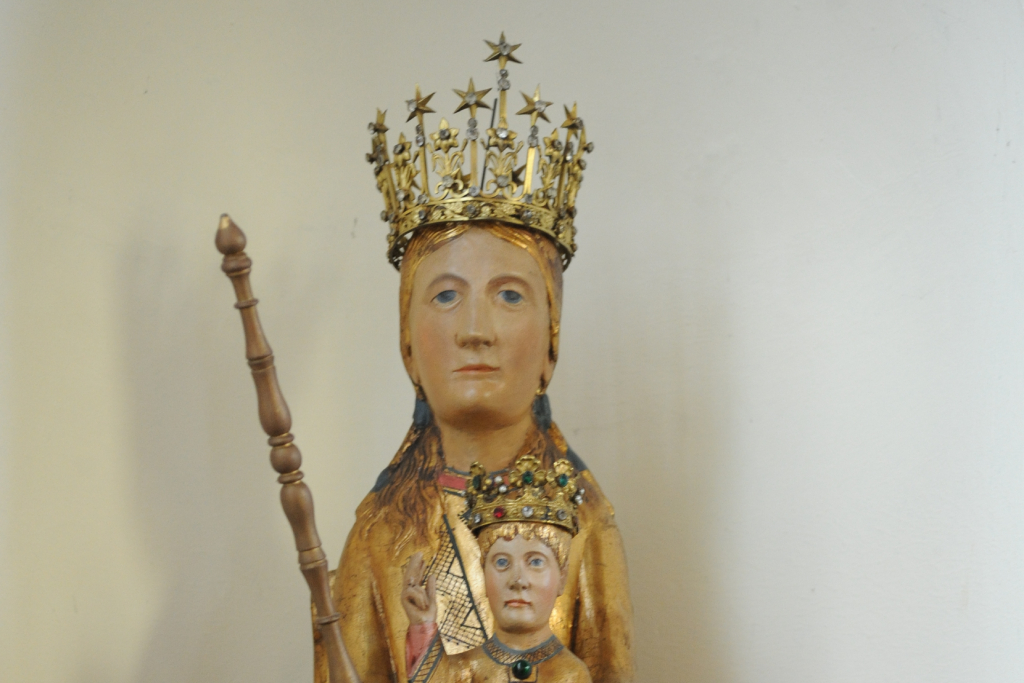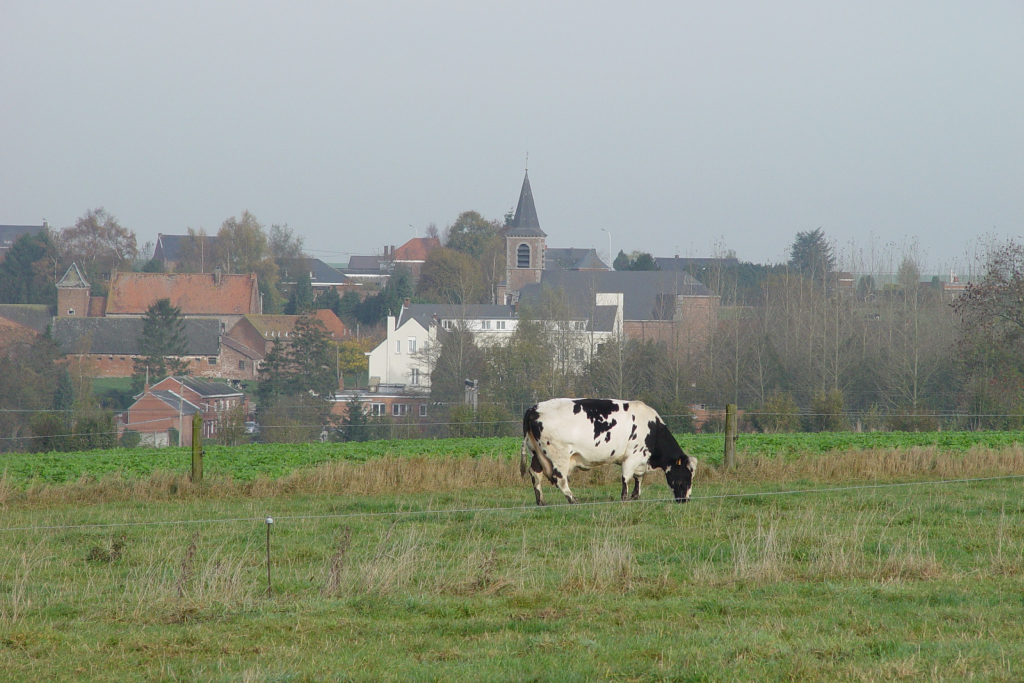Around 1995, some excavations preceding the building of the TGV railway line found traces of proto-historic and gallo-roman around the Piéman site. Situated on the eastern Dendre, the rural village of Arbre belonged to a noble family bearing the same name in the 13th century.
The name of the village goes back to the 12th century. The abbeys of St-Martin (Tournai) and Liesses (Avesnois) were owners of large tracts of land. The altar of the church belongs to the abbey Saint-Martin. The present church dates from the last third of the 18th century and is built in blue stone and brick.
Some remains of gallo-roman vilas have been found at Ghislenghien. Under the Ancien Régime, the history of the village is linked to that of the benedictine abbey of noble ladies which was founded in 1126 by Ide of Chièvres and Ide of Ath.
At the beginning of the 12th century, the village belonged to a family that bears its name. The largest lordship which covered more than half of Gibecq, belongs to the abbey of Ghislenghien. In 1743 the church was rebuilt in Tournai style with bricks and blue stones.
Outin : germanic hulta « wood » and « haima » dwelling. In 847 Houtaing is mentioned among the properties of the Abbey of Saint-Amand. After the Princes of Ligne, the fiefdom of La Berlière passed through different hands until the Counts of Oultrement from 1845 to 1912. Acquired by bourgeois families, the estate was bought by the Josephite fathers who set up a secondary school there.
In 1978 archeology revealed vestiges of a Neolithic occupation at Irchonwelz. The first written documents date back to the 11th century. Located in the eastern Dender valley the locality has always had a destiny linked to the neighbouring fortified town and suffered the effects of sièges.
The first mention of Isières dates back to 1180, when the Bishop of Cambrai gave his Chapter the property he owned there. In the 13th century a good part of the village belonged to the Audenarde family. Around 1294, Isières was involved in the conflict of the « Lands of debates ».
In the 13th century, the village of Lanquesaint was held by the lord of Audenarde. The other important lordships belonged to the Chapter of Cambrai and to the Count of Hainaut. The abbeys of Saint-Ghislain, Ghislenghien and Liesses owned properties or rents there.
The greatest glory of the locality is to have given its name to one of the most illustrious families of the belgian nobility. Their castle is mentioned in 1020; Ligne was made a barony in 1180; the Lignes received the title of count in 1545 and prince in 1601. However, from the Middle Ages their main residence was Beloeil.
The territory of this commune on the eastern Dendre has been occupied since prehistoric times: a green jade axe was discovered in 1961 and some roman burial places in 1876 and 1896. In the Middle Ages, the town hall of Maffle belonged to the Sainte-Waudru Chapter of Mons. The church of Maffle was a relief of that at Arbre until the end of the 18th century.
In the absence of archeological excavations, the distant past of Mainvault still remains a mystery despite a few finds. Nevertheless, the roman road from Bavay to Velzeke bypasses the village to the west. An important seignorial family appears in texts from the 12th century.
A former possession of the Bishop of Cambrai, the discovery of an archeological site in the industrial park to the west of the village attests to human occupation present in the iron age and prosperity in the gallo-roman era. A reconstruction is to be seen in the Espace Gallo-romain at Ath.
Moulbaix’s past before the Middle Ages remains unknown. The main seigniory is a dependancy of that of Blicquy. Charles Quint supported the Chasteler family there, who gave Hainaut renowned military and civilian officers. Remains of the motte and the feudal castle still exist near the church. In neo-medieval english style (Tudor), the present castle was designed by the architect Désirée Limbourg in 1890 and restored under his direction after the fire of the previous year.
The site of Ormeignies has yielded vestiges of occupation by the first farmers in the neolithic period. From the 14th century the main lordship was in the hands of the Ligne family until the end of the Ancien Régime. The lordship of Bétissart is a fief of the land of Chièvres. The lordship of la Rosière, made up of two farms (the small and the large) came under Cambron Abbey.
Neither archeology nor archives provide any information about the location before the 12th century. From the Middle Ages, the dominant lordship, including the Stocq mill, belonged to the barony of Leuze. The hereditary town hall was sold to the Yves family in 1390. This family obtained the title of baron in the middle of the 17th century. The Chapter Notre-Dame de Condé and the abbeys of Saint-Denis en Broqueroie, Liesses and Saint-Ghislain owned property here.
In the Middle Ages, Rebaix was one of the twelves peerages of Hainaut which belonged to the Rebaix family, then to those of Lahamaide and Egmont. Work on the A8 motorway uncovered a site of Merovingian occupation (6th to 7th centuries) with an large cemetary located between the village and the hamlet of Perquiesse. It is in this hamlet that the castle was located, It was abandonned in 1485.
Located near the Bavai-Velzeke road, the village has not delivered anything from its distant past. The first mention of the locality appears in a act of 948 ; Its territory was divided into two lordships. The abbey of Ghislenghien had justice there, rights and a water mill for flour and oil. The lord of Ligne had a pillory there. These two lordships possessed their own échevinages and received a charter-law respectively in 1411 and 1413.
No archeological discovery attests to an ancient occupation of the village. Its name suggests clearing in the high Middle Ages, perhaps by the monks of the french abbey of Saint-Amand-en-Pévèle, who owned it in 847. The monks owned the Capleaumont farm there, a mill on the Dendre, woods and land entrusted to an solicitor. An échevinage is cited in 1303 and a chart-law is granted in 1414.

